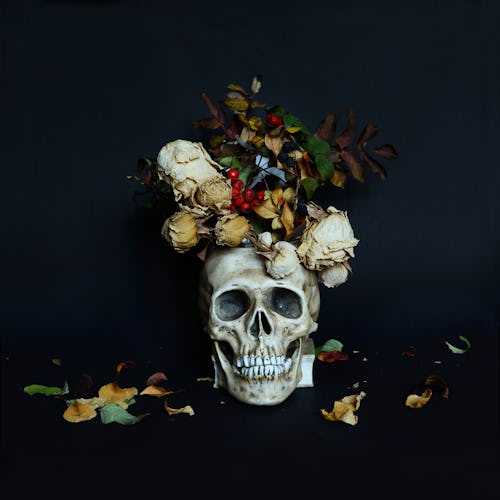The underrated virtues of meditating on your own death
This mindfulness practice is the best way to start your new year.

New Year's resolution culture is extremely weird and whimsical. The idea that somehow you should become a totally different person next year than you were last year feels like an insidious marketing scam to get people to buy home gym equipment. That being said, I love self reflection and ritual, and since December 31st is the day a lot of the world has agreed signals the end of one era and the beginning of the next, the first few days of the new year feel like a great time to take stock of priorities. This death meditation is one of my favorite ways to do that.
Yes, I know that the idea of meditating on death sounds depressing, but I actually find the opposite to be true. Coming to terms with your own mortality is a great way to cut through the extraneous bullshit clogging your mind space and get a clear idea of what’s actually important to you. I must admit that I don’t know the exact origins of this meditation or what cultural tradition it originated in. It was taught to me by a local meditation teacher I love, but there are similar meditations in many traditions.
Meditating on death is common in many spiritual and religious contexts, but this meditation is a little different than practices that invite you to witness the decay of your corpse or the world moving on without you. This meditation somehow feels more practical to me in that it can be spiritual if that’s where you take it, but it can also be practical. The meditation basically involves imagining that you are going to die in increasingly small periods of time — a year, a month, a week, and a day — and imagining how you would spend the rest of your life in those limited periods.
Here’s my version of it, for your practicing pleasure. Please be mindful of how this meditation may trigger you and adjust accordingly (or try something less intense).
It’s important to be comfortable when you’re contemplating the inevitability of your own death, so go ahead and cozy up. You can sit in a chair or on the floor or you can lie down on a yoga mat. Personally, I like to do this meditation in savasana — a.k.a. corpse pose — because it just seems fitting. Have a pen handy for post-meditation journaling and also some tissues and a snack.
Once you’re comfortable, close your eyes. If having your eyes closed doesn’t work for you, then just try to keep your gaze soft and unfocused. Imagine the person you feel closest to. Try to capture them in your mind with as much detail as you can. How would they behave if they had to give you hard news? With your mind's eye, see them taking your hand and telling you gently that you have just a year left to live.
Try not to get caught up in the details of why this might be happening. Instead, think about what you would do if you had one year left to live. Where would you live? Who would you spend time with? What would you spend time doing? What would you spend your last days on this earth making or thinking about? Get as granular in your imaginings as you can. Let all the details of what your best year of life might look like flood you, and then let those images go. And as always, remember to breathe.
Repeat this scenario in decreasing increments of time: A month, a week, a day, an hour. You can even take it down to the minute if you want. Then start writing. Write down what’s most important to you, no matter how much or little time you have left. Write down who you want to spend time with and how you want to spend that time.
At the end of this meditation, hopefully you will have a better idea of how to prioritize your life based on what comes up for you when your mind is most open. You can use this information to set goals if that feels good to you, but you can also just move forward secure in the knowledge that you know what’s important to you.